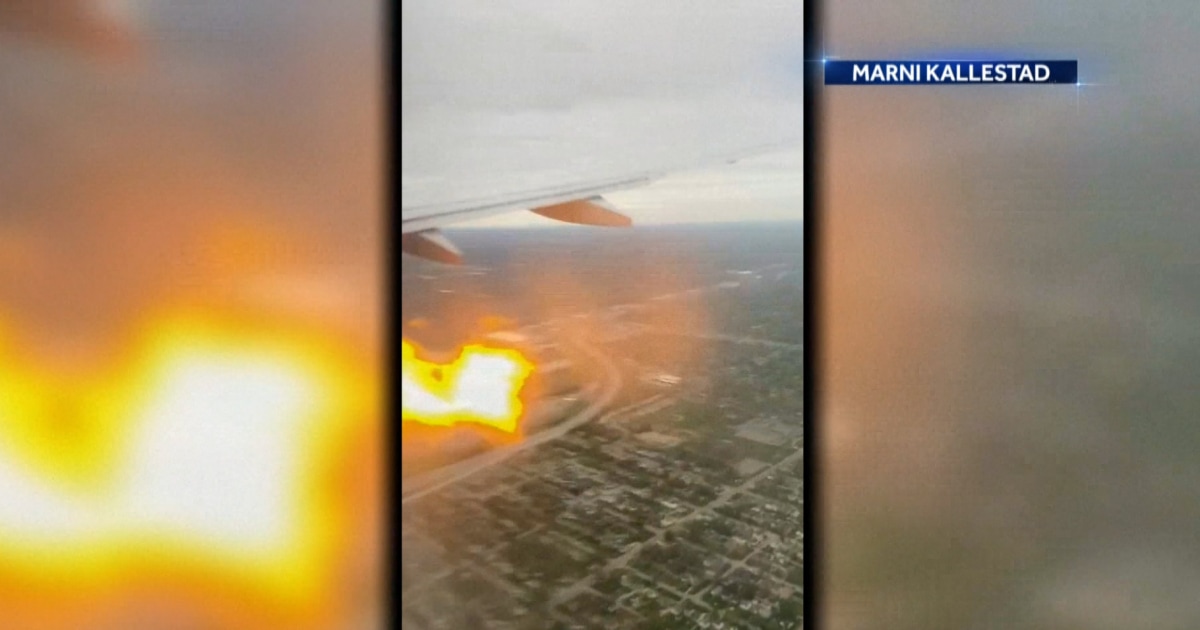An American Airlines flight headed for Phoenix Sunday morning returned to Ohio’s John Glenn Columbus International Airport because a bird strike disabled an engine, authorities said.
The engine fire following the attack was captured on cellphone video that has been verified by NBC News. It shows the flames of the No. 2 engine licking the right wing of the plane in the air.
Takeoff was scheduled for 7:43 a.m., according to the tracker. reported flightand the bird strike occurred at approximately 8 a.m., the Federal Aviation Administration said in a statement.
The plane returned to the airport shortly after and landed safely, American Airlines said in its own statement.
«The flight landed normally and taxied safely to the gate under its own power,» it said. «The aircraft was taken out of service for maintenance and our team is working to get customers back on their way.»
The Boeing 737-800 had 173 passengers and crew and was carrying 30,000 pounds of fuel, according to radio traffic with an air traffic controller.
No injuries were reported.
The diverted version of the flight was minutes from landing at Phoenix Sky Harbor International Airport on Sunday afternoon, according to FlightAware.
Passenger John Fisher told the NBC affiliate WCMH of Columbus that passengers quickly became aware of the bird strike due to the sounds produced by the collision.
“Apparently we hit a flock of geese and the engine started making very loud ‘clonk, clonk, clonk’ noises,” he said. «Eventually they turned off the engine, turned around and headed back to the airport.»
Emergency crews responded to the aircraft after it landed, but the flight and arrival schedule at John Glenn Columbus International Airport was not affected, the airport saying.
The airport initially blamed the incident on a burning engine, but later said «mechanical problems» caused the aircraft to turn back.
For domestic air travel, bird strikes are common and potentially catastrophic, accounting for 350 deaths in US passenger flight history, according to the Aircraft Owners and Pilots Association.
The Federal Aviation Administration defines large birds, among the most dangerous elements of nature for pilots, as those that weigh four pounds or more. «There is no aircraft engine certified to ingest a large bird without shutting down,» the nonprofit organization states in a resource document on the phenomenon.
The bird strike heard around the world took place on January 15, 2009, when an Airbus A320 designated US Airways Flight 1549 from New York City’s LaGuardia Airport collided with a flock of geese so large that they it destroyed both engines and converted the approximately 70-ton aircraft into a glider.
Retired pilot Chesley «Sully» Sullenberger moved fast and pointed the plane toward the Hudson River, where its emergency landing was a success with no fatalities.
Bird strikes in the United States may be on the rise because bird populations have expanded while planes have gotten quieter, according to the FAA.
The number of Canada geese in the country has tripled in a decade, according to the pilots’ association. Each weighs an average of 12 pounds, he said, and can individually disable a motor.
His advice to pilots is to avoid wetlands, be careful about the seasons and migration patterns of birds, and always be prepared for a bird strike, as it seems to be inevitable.
jay blackman, T.J. Swigart, ava kelley and jacob cavaiani contributed.

